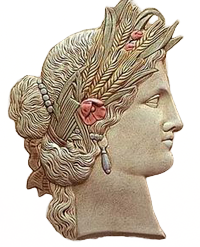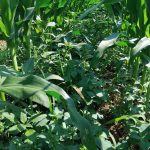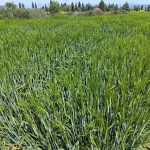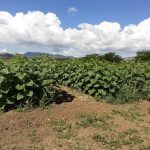Laboratory of Weed Science
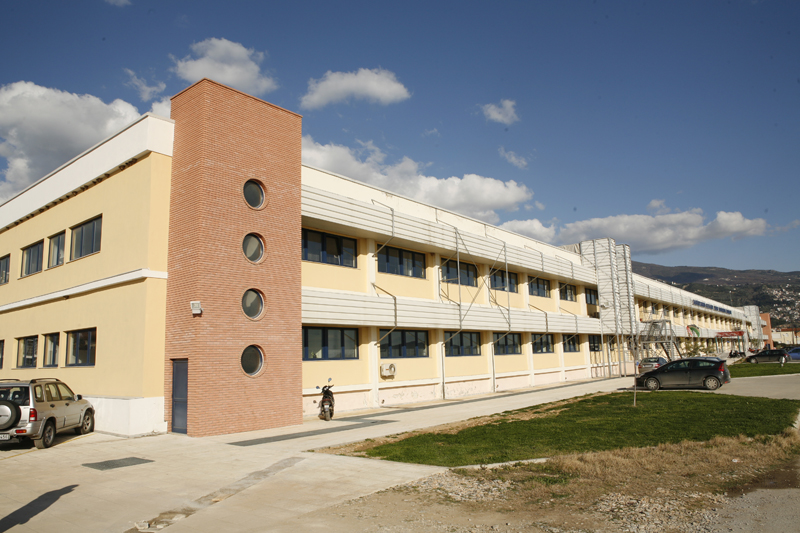
Laboratory of Weed Science
Director:
Anestis Karkanis, Associate Professor in Weed Science
Members
Efi Levizou, Associate Professor in Plant Physiology
PhD students
Postgraduate and undergraduate students
Brief Description
The main interests of Laboratory of Weed Science include research, consultancy and teaching in Weed Science. The research of the Laboratory is focused on weed biology, weed management, weed ecology (crops-weeds interactions), organic and integrated weed management, herbicides resistance, fate and behavior of herbicides in the environment (plants, soil, water), and protection of the environment from herbicides.
Dr. Levizou covers the teaching and research needs of the Department in the field of Plant Physiology with an emphasis on Plant Stress Physiology.
Courses
Anestis Karkanis
Undergraduate courses:
Systematic Botany (4th Semester)
eclass: https://eclass.uth.gr/courses/AGR_U_173/
Weed Science (5th Semester)
eclass: https://eclass.uth.gr/courses/AGR_U_155/
Postgraduate courses:
Weed management (MSc program “Phytoiatrics and Environment”)
eclass: https://eclass.uth.gr/courses/AGR_U_103/
Protocols and programs in modern plant protection (MSc program “Phytoiatrics and Environment”)
eclass: https://eclass.uth.gr/courses/AGR_U_104/
Special topics in Phytoiatrics (MSc program “Phytoiatrics and Environment”)
eclass: https://eclass.uth.gr/courses/AGR_U_109/
Efi Levizou
Undergraduate courses:
Plant Physiology (3rd Semester)
eclass: https://eclass.uth.gr/courses/AGR_U_180/
Plant Stress Physiology (10th Semester)
eclass: https://eclass.uth.gr/courses/AGR_U_179/
Postgraduate courses:
Functional responses and adaptations of crops under protected cultivation (MSc program «Technology and management of Greenhouse and greenhouse cultivated crops»)
eclass: https://eclass.uth.gr/courses/AGR_U_114/
Plant-microbe interactions (MSc program «Host-microbe interactions»)
Research
Anestis Karkanis
Research Interests
- Weed Biology
- Crop-Weed interactions.
- Weed management in field crops, vegetables, vineyards, and tree crops.
- Weed managements in organic crops.
- Herbicide resistant weeds and their management.
- Edible and medicinal weeds
Selected Publications
- Karkanis A., Nakopoulos D., Palamioti C., Giannoulis K.D., Palamiotis T., Igoumenos G., Souipas S.; Liava V., Danalatos N.G. 2022. Effects of post-emergence herbicides and period of Johnsongrass (Sorghum halepense (L.) Pers.) control on growth and yield of sunflower crops. Agronomy. 12, 581.
- Karkanis A., Angou, A., Athanasiadou, D., Giannoulis, K.D., Askianaki, R., Kousi N., Sarridis A., Souipas S., Karamoutis C. 2022. Using post-emergence herbicides in combination with the sowing date to suppress Sinapis arvensis and Silybum marianum in durum wheat. Agronomy. 12, 2583.
- Liava V., Karkanis A., Tsiropoulos N. 2021. Yield and silymarin content in milk thistle (Silybum marianum (L.) Gaertn.) fruits affected by the nitrogen fertilizers. Industrial Crops and Products. 171, 113955.
- Arampatzis D.A., Karkanis A.C., Tsiropoulos N.G., 2019. Silymarin content and antioxidant activity of seeds of wild Silybum marianum populations growing in Greece. Annals of Applied Biology. 174, 61-73.
- Karkanis Anestis, Athanasiadou Despoina, Giannoulis Kyriakos, Karanasou Konstantina, Zografos Spyridon, Souipas Spyridon, Bartzialis Dimitrios, Danalatos Nicholaos, 2020. Johnsongrass (Sorghum halepense (L.) Pers.) interference, control and recovery under different management practices and its effects on the grain yield and quality of maize crop. Agronomy, 10, 266.
- Karkanis A., Lykas C., Liava V., Bezou A., Petropoulos S., Tsiropoulos N., 2018. Weed interference with peppermint (Mentha x piperita) and spearmint (Mentha spicata L.) crops under different herbicide treatments: Effects on biomass and essential oil yield. Journal of the Science of Food and Agriculture. 98: 43-50.
Efi Levizou
Research Interests
- Alternative crop nutrition systems in the context of circular economy, and their effects on plant’s functional characteristics:
- Aquaponics
- Insect frass as bio-fertilizer
- Effects of abiotic stress factors on plant physiology and production, focusing on:
- increased concentration of microorganism toxins in irrigation water
- increased heavy metals concentration in soil
Selected Publications
- Tsoumalakou E., Mente E., Katsoulas N., Kormas KA., Vlahos N., Kapsis P. Levizou E. 2022. Precise monitoring of lettuce functional responses to minimal nutrient supplementation identifies aquaponic system’s nutrient limitations and their time-course. Agriculture, 12(8), 1278.
- Antoniadis, V., Thalassinos, G., Levizou, E., Shaheen, S.M., Rinklebe, J. 2022. Hazardous enrichment of toxic elements in soils and olives in the urban zone of Lavrio, Greece, a legacy, millennia-old silver/lead mining area and related health risk assessment. Journal of Hazardous Materials, 434, 128906.
- Tsoumalakou E., Papadimitriou T., Berillis P., Kormas K., Levizou E. 2021. Spray irrigation with microcystins-rich water affects plant performance from the microscopic to the functional level and food safety of spinach (Spinacia oleracea). Science of the Total Environment, 789, 147948.
- Antoniadis V., Shaheen SM., Stark H-J., Wennrich R., Levizou E., Merbach I., Rinklebe J. 2021. Phytoremediation potential of twelve wild plant species for toxic elements in a contaminated soil. Environment International 146, 106233.
- Levizou E., Statiris G., Papadimitriou Th., Laspidou CS., Kormas KA. 2017. Lettuce facing microcystins-rich irrigation water at different developmental stages: effects on plant performance and MCs bioaccumulation. Ecotoxicology and Environmental Safety. 143, 193-200.
- Levizou Ε., Kyparissis Α. 2016. A novel pattern of leaf movement: the case of Capparis spinosa L. Tree Physiology. 36, 1117-1126.

